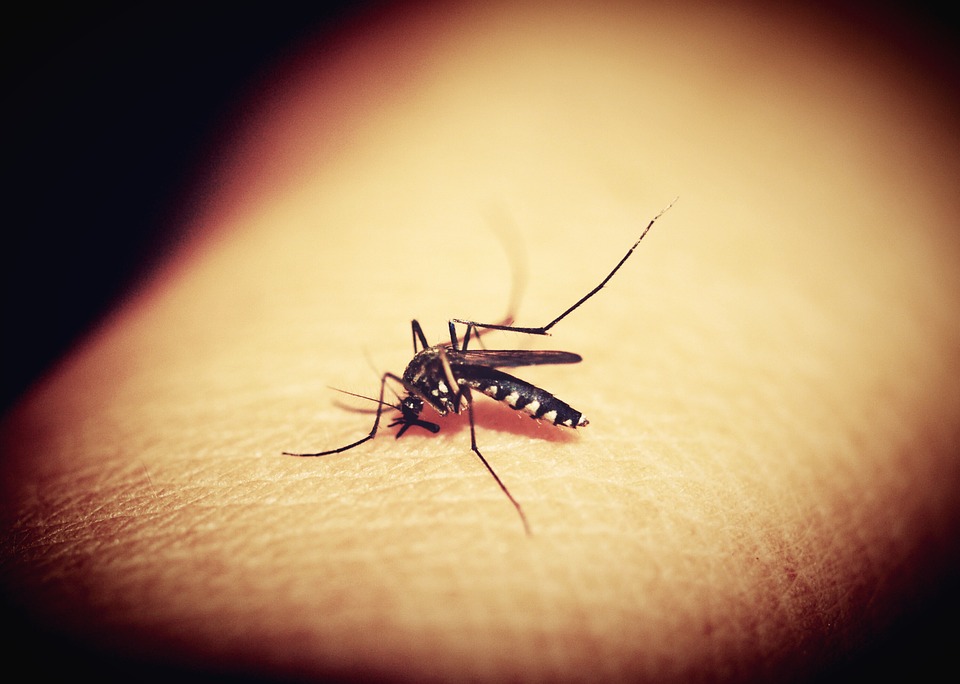Dylan Stoll | Health Editor
Featured Image: Mosquitos are responsible for over 750,000 deaths per year. | Pixabay
When the movie Jaws was first released in 1975, it struck a very specific and poignant fear of sharks in the people who watched it. As most from that time period can attest to, everybody was afraid to go in the water after seeing the box-office hit for fear of meeting first-hand the gnashing and thrashing, bone-crushing and flesh-tearing teeth of the great white shark. Today, that same fear persists. The shark has forever been ingrained in our minds as a terror of the open sea, as one of our greatest foes with a penchant for human flesh, but is that terror misplaced?
What we should really fear isn’t a 1,000-kilogram bundle of muscle and teeth, but a much smaller, and surprisingly much less manageable, five-milligram creature: the mosquito.
Everybody who is reading this has more than likely had their blood rudely and obnoxiously stolen by one of these terrible little monsters. We all hate them, and we all know why. They’re annoying; they make that high pitched sound when they get near you, but most importantly; their bite leaves you with a relentlessly itchy bump that torments even the toughest of us.
But is that why you should fear the mosquito? Not exactly. It isn’t the bite specifically that should scare you, but rather, what the bite may contain.
Mosquitos carry some of the most dangerous diseases known to mankind. These include: malaria, dengue, West Nile virus, chikungunya, yellow fever, filariasis, tularemia, dirofilariasis, Japanese encephalitis, Saint Louis encephalitis, Western equine encephalitis, Eastern equine encephalitis, Venezuelan equine encephalitis, Ross River fever, Barmah Forest fever, La Crosse encephalitis, and Zika fever, as well as the recently discovered Keystone virus and Rift Valley fever.
As a result, they are responsible for over 750,000 human deaths per year, a significant amount more than the measly six deaths per year attributed to those dastardly vicious sharks.
And you may think that these diseases are contained within other countries, but you’ve thought wrong. Western, Eastern, and St. Louis Equine Encephalitis, as well as West Nile viruses have all been found in Canadian mosquitos, with West Nile being the most prevalent.
Although the mosquito is a difficult creature to manage, there are measures that have been put in place to keep the populations under control. In the spirit of bringing things closer to home, since the beginning of June, York has been conducting a larvicide program under the authority of the local medical officer of health that will continue until the end of October. Methoprene pellets have been placed into all university catch basins, and Bacillus thuringiensis var israelensis, another type of larvicide, has been applied in granular form to specific bodies of surface water, which were chosen based on their mosquito larval content.
As for large-scale control in other countries, some interesting ideas have come to the table and have even been implemented.
One such idea is the genetic modification of non-biting male mosquitoes. The plan was to modify their DNA in such a way as to pass on a gene that would kill their offspring before sexual maturity. The ambitious venture was completed by a company known as Oxitec, which conducted a large field trial in Brazil, specifically in the city of Jacobina. They released 450,000 GM mosquitoes per week from 2013 to 2015 and they reported a 90 per cent reduced overall population.
Another method is sterilization. Dr. Andrew Donini, a professor at York who studies mosquitoes, explained the process further: “The sterile males compete with regular wild males for females with the idea that females will be inseminated with sterile sperm. The eggs these females lay are unfertilized because the sperm is no good, therefore they will never produce any hatchlings/larvae. I’ve read that this has been effective over the short term but one would have to keep releasing lots of sterile males to lower populations levels.”
The aforementioned methods are most likely the least invasive in terms of the environment and surrounding species—species that include us. There are, however, other population controllers that are much more invasive and are still in use today.
“To this day some governments still spray with pesticides,” clarified Donini. “A good recent example is the mysterious sickness that US and Canadian diplomats experienced while working in Cuba. It turns out a study has linked that to pesticide fumigation for mosquitoes. The diplomats were exposed to levels of the pesticide that ultimately gave them a neurological illness.”
As for the individual who still wishes to enjoy the outdoors without a PhD in genetics or a tank full of toxic pesticides, Donini advises that you do everything the government health agencies recommend: “Don’t get bit. Wear long sleeves, long pants, use DEET, and prevent stagnant water around your house.”


